calsfoundation@cals.org
Bradley County
| Region: | Southeast |
| County Seat: | Warren |
| Established: | December 18, 1840 |
| Parent County: | Union |
| Population: | 10,545 (2020 Census) |
| Area: | 649.17 square miles (2020 Census) |
| Historical Population as per the U.S. Census: | |||||||||
|
1810 |
1820 |
1830 |
1840 |
1850 |
1860 |
1870 |
1880 |
1890 |
1900 |
|
– |
– |
– |
– |
3,829 |
8,388 |
8,646 |
6,285 |
7,972 |
9,651 |
|
1910 |
1920 |
1930 |
1940 |
1950 |
1960 |
1970 |
1980 |
1990 |
2000 |
|
14,518 |
15,970 |
17,494 |
18,097 |
15,987 |
14,029 |
12,778 |
13,803 |
11,793 |
12,600 |
|
2010 |
2020 |
|
|
|
|
|
|
|
|
|
11,508 |
10,545 |
|
|
|
|
|
|
|
|
| Population Characteristics as per the 2020 U.S. Census: | ||
| White |
5,890 |
55.9% |
| African American |
2,937 |
27.9% |
| American Indian |
92 |
0.9% |
| Asian |
30 |
0.3% |
| Native Hawaiian or Other Pacific Islander |
0 |
0.0% |
| Some Other Race |
1,156 |
11.0% |
| Two or More Races |
440 |
4.2% |
| Hispanic Origin (may be of any race) |
1,575 |
14.9% |
| Population Density |
16.2 people per square mile |
|
| Median Household Income (2019) |
$43,184 |
|
| Per Capita Income (2015–2019) |
$22,945 |
|
| Percent of Population below Poverty Line (2019) |
20.5% |
|
Bradley County, located in southern Arkansas in the West Gulf Coastal Plain, has become known nationally as one of the prime production areas for tomatoes. The “Bradley Pink” variety is the standard for quality for the entire tomato market in the United States. The tomato has been labeled “Arkansas’s gift to the nation,” and the pink tomato is the official fruit and vegetable of the state. The Bradley County Pink Tomato Festival draws thousands of visitors each year.
The county is bounded on the west by Calhoun County, with Moro Bayou the dividing line, and on the north by Cleveland County. To the east is Drew County, the dividing line being the Saline River. The Ouachita River divides the county from Ashley County to the southeast and Union County to the southwest. The Ouachita and Saline rivers provide Bradley County with a natural watershed, as it is at the lower end of the peninsula formed by the union of the Ouachita and Saline rivers.
Pre-European Exploration through European Exploration and Settlement
The area now known as Bradley County has been inhabited for more than 10,000 years. About 140 archaeological sites are listed for the county, ranging from small campsites to mound sites to cemeteries. After AD 1000, residents began raising domesticated crops. Most likely, the descendants of those early residents include the Tunica and possibly the Quapaw.
The first Europeans to explore the Bradley County area were probably French colonial hunters, who may have established temporary camps in the area. The earliest well-documented travelers to enter Bradley County were members of the Dunbar and Hunter expedition, who traveled up and down the Ouachita River in 1804.
Louisiana Purchase through Early Statehood
While the land that would become Bradley County was within the boundaries of the million acres defined as the Quapaw reservation in an 1818 treaty, they were no longer living in that area by the time of the treaty. They ceded the land to the United States government in another treaty in 1824.
Captain Hugh Bradley, a native of Tennessee and a veteran of the War of 1812, led an expedition to explore the Arkansas Territory via the Red River. By 1821 or 1822, this expedition had settled in present-day Lafayette County. Becoming dissatisfied there, Bradley and the remainder of the colony removed to what was then Clark County in 1825.
A new county, Arkansas’s forty-fourth, was created out of Union County on December 18, 1840, and named for Hugh Bradley. For the first two years of its existence, the county conducted its business in Bradley’s home. In turn, portions of Bradley County later were incorporated into Ashley, Calhoun, Cleveland, Dallas, and Drew counties.
The present-day county seat of Warren, originally referred to as Pennington Settlement, was settled in the 1840s on land donated by John Marks and John Splawn. A difference of opinion exists as to how the city got its name. An early legend claims that the community was named for Bradley’s slave, Warren. Other sources claim that the name was in honor of an associate of Bradley who lived in Camden (Ouachita County), Edward A. Warren.
Located at the center of the county, the town of Hermitage was settled prior to 1850. Other early settlements were at Parnell Springs and Gravel Ridge. The crossroads community of Johnsville was aptly named because so many of its men bore the name “John”: John R. Hampton, John Cabeen, John Martin, and John Brady, to cite a few. Other communities, such as Banks and Ingalls, came later. The latter was originally known as Crowtown but acquired the name of a U.S. senator from Kansas at the insistence of the management of the Rock Island Railroad.
During this period, the county’s economy was agricultural, with the principal crop being corn, supplemented with grain, beans, squash, turnips, and other vegetables. There was some production of beef and pork.
Civil War though Reconstruction
Large-scale plantation agriculture dominated the economy of Bradley County in the antebellum period, and large numbers of enslaved people were tasked with the operation of these plantations. The 1860 census counted 5,698 white citizens and 2,690 enslaved people, with almost one-third of the total population of the county held in bondage. Josiah Gould, the county’s representative at the Secession Convention, owned forty-four enslaved people in 1860.
The citizens of Bradley County raised several units to support the Southern cause in the Civil War. Bradley companies were listed in the Arkansas Second, Fifth, and Ninth infantry regiments.
Two battles had a direct impact upon Bradley County, one of which was the Action at Marks’ Mills just over the Cleveland County line. This battle was precipitated by an attempt to resupply the troops of Union general Frederick Steele at Camden. The other was the Skirmish at Longview on the Saline River, which resulted in a Union victory in which about 260 Confederate troops were captured, as well as many supplies.
During the Civil War, no crops were planted, and the fields (which had been laboriously cleared) became weed choked. No fertilizer was applied to upland fields, and farmers had done little or no crop rotation. By the end of the war, the agriculture of Bradley County was in very poor condition.
Post Reconstruction through the Gilded Age
During the latter part of the nineteenth century, the heavily wooded area of Bradley County attracted investors eager to participate in the boom in demand for timber as the massive westward expansion outstripped the supply of lumber heretofore coming from the Great Lakes area. In the 1880s, railroad magnate Jay Gould extended his empire into Arkansas by building the St. Louis, Iron Mountain and Southern Railroad. Bradley County was serviced by the Little Rock, Mississippi River and Texas Railway, linking Warren to Dermott (Chicot County). The stage was set for the beginning of the exploitation and development of the broad expanse of shortleaf yellow pine lands in this region.
Warren became home to three large milling operations. The Southern Lumber Company, formed in 1902, grew from an operation started in 1882 by James E. Lindsay of Davenport, Iowa, and Charles Ainsworth of Moline, Illinois. The principals were Fredrick E. Weyerhaeuser and E. P. Denkman. By 1907, this mill produced 100,000 board feet of lumber a day and employed 300. The Bradley Lumber Company was founded by Samuel H. Fullerton. It became one of the world’s largest dealers in hardwood lumber. By 1907, it also produced 100,000 board feet of lumber a day and employed 350. The third mill was the Arkansas Lumber Company, founded by Moses F. Rittenhouse and John W. Embree of Chicago. By 1907, this mill produced 150,000 board feet of lumber a day and employed 400. As a result of the lumber business, Warren’s population doubled between 1900 and 1910.
Parnell Springs, a health resort located northwest of present-day Warren, operated in the late nineteenth and early twentieth centuries. Using a spring on the property, a hotel, cabins, and other amenities attracted visitors to the site to bathe in the waters. By the 1930s, the venture had failed and the site was abandoned.
Brothers William and Henry Beavers were lynched in two separate incidents in the 1890s, with William killed in 1890, accused of attacking a white woman. Henry was killed in 1892 near Wilmar (Drew County) for an alleged attack on another white woman. Both women survived the incidents. A young man named Crane Green was lynched in 1903.
Early Twentieth Century
While manufacturing was becoming the county’s major source of employment, its agricultural base experienced a major transformation. As the viability of the small cotton farm decreased, local farmers turned to raising tomatoes, especially the pink tomato, introduced to the area as early as the 1920s. The development of the pink tomato resulted in steady growth in production, particularly in the late 1960s.
Local attorney William Shields Goodwin represented the Seventh District of Arkansas in the U.S. House of Representatives from 1911 to 1921. Carroll Charles Hollensworth from Warren served in the Arkansas House of Representatives for almost two decades beginning in 1930 and culminated his tenure with the position of floor leader following service as Speaker of the House.
The citizens of Bradley County fared as well as most Arkansans during the Great Depression. One factor that benefited Bradley County was the continual need for lumber in the 1930s. A fire at the Southern Lumber Company in 1939 led to repairs and modernization, making the mill one of the nation’s most up to date. Neither of Warren’s banks failed, unlike many other banks in the state and in the nation.
World War II through the Modern Era
Fifty-nine county citizens lost their lives in World War II. Two destructive tornadoes hit Bradley County in less than thirty years. On January 3, 1949, a tornado struck in the heart of Warren, destroying a mill and killing more than fifty. On March 28, 1975, another tornado followed the same path from Farmville (Bradley County) through the city, killing at least seven.
Bradley County’s population peaked in 1940, reaching 18,097, but soon began declining as the farm workforce was reduced when the manufacturing plants were modernized to become less labor intensive. Warren’s population reached a peak of 7,646 in 1980 but fell thereafter as well.
Several industries were established in the county following World War II. Dairy farms were established, supplying milk to a Kraft Company cheese plant in Warren. In 1958, the West Coast firm Potlatch Inc. purchased the Bradley and Southern lumber firms. Jack Winter opened a manufacturing business of women’s clothing that same year, and, in 1975, the La Donna Garment Company also began production of a line of women’s clothing in Bradley County.
Attractions
As the “Bradley Pink” variety of tomato came to be the standard of quality for the entire market, the county exploited this fame by organizing the Bradley County Pink Tomato Festival, which attracts some 30,000 visitors each year.
The Felsenthal National Wildlife Refuge, at the southern tip of Bradley County (and also in Ashley and Union counties), was established in 1970 with the world’s largest green-tree reservoir, consisting of 15,000 acres. The reserve offers camping facilities, fishing, and duck hunting. Moro Bay State Park, on the Ouachita River twenty-nine miles southwest of Warren, where Bradley County joins with Calhoun and Union counties, consists of 117 acres and features camping, fishing, hiking, and water sports.
For additional information:
Balogh, George W. Entrepreneurs in the Lumber Industry: Arkansas, 1881–1963. New York: Garland Publishing Company, 1995.
“Bradley County Centennial Magazine: Presenting the Growth and Progress of the County.” Warren, AR: 1940.
Bradley County Roots. Warren, AR: Bradley County Genealogical Society (1991–).
Gatewood, Robert Lynn. A Bicentennial History of Bradley County, Arkansas. N.p.: Warren and Bradley County Bicentennial Committee, 1976.
Sexton, Leah Forrest. The History of the Bradley County Pink Tomato Industry. Arkadelphia, AR: 2014.
Bill Norman
Little Rock, Arkansas
Staff of the CALS Encyclopedia of Arkansas
Revised 2022, David Sesser, Henderson State University
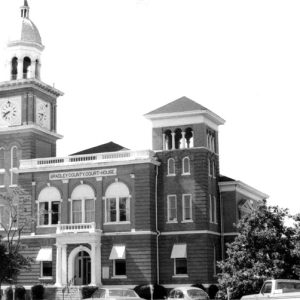 Bradley County Courthouse
Bradley County Courthouse 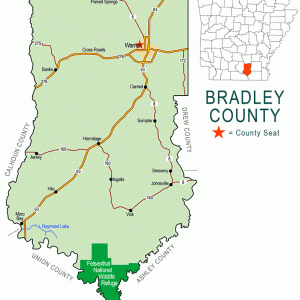 Bradley County Map
Bradley County Map  Bradley Pink Tomato
Bradley Pink Tomato 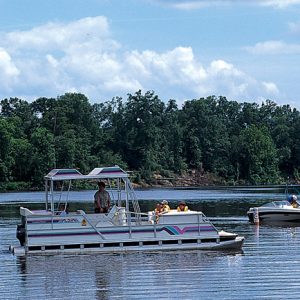 Moro Bay State Park
Moro Bay State Park 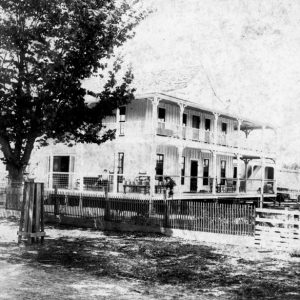 Parnell Springs Hotel
Parnell Springs Hotel 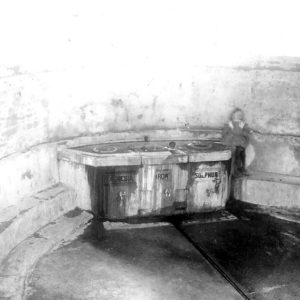 Parnell Springs Spring
Parnell Springs Spring 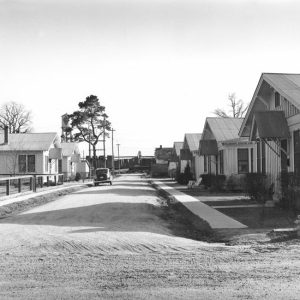 Warren Mill Worker Housing
Warren Mill Worker Housing  Warren Prairie Natural Area
Warren Prairie Natural Area 




Comments
No comments on this entry yet.